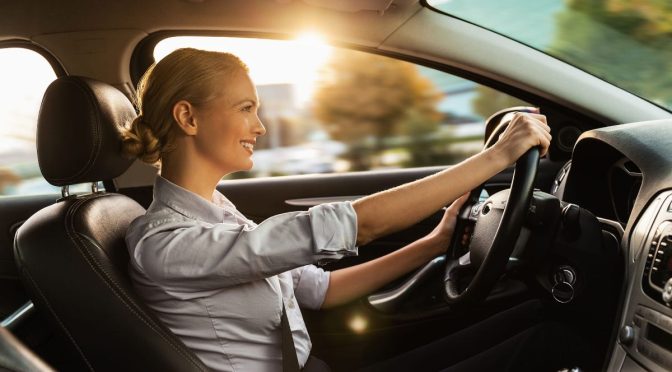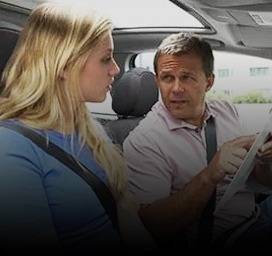Driving a car is a rite of passage for many, and starting with an automatic vehicle can be a great way to ease into the driving world. Unlike manual cars, automatic cars do not require gear shifting, making them simpler for beginners. However, even with the simplicity of an automatic program, there are essential skills and tips every new driver should master to ensure safety and confidence on the road. This blog will discuss all the minor details about How to Drive Automatic Car:
Understanding the Basics
Before you start driving, take some time to familiarize yourself with the basics of your automatic car:
Foot Controls
- The pedal on the left is the brake. Press it to slow down or stop the car.
- The pedal on the right is the accelerator. Gently press it to increase speed.
- In some cars, there is a third pedal on the left, but it’s not used in automatic cars. This is called the dead pedal and is there for resting your left foot.
Gear Selector
Automatic cars typically have a gear selector lever located on the centre console. The most common positions include:
- P (Park): Used when the car is stationary and turned off.
- R (Reverse): Engaged when moving the car backward.
- N (Neutral): Use this when the car is stationary, and you need to start the engine.
- D (Drive): The default position for forward motion. As required, the car will automatically change gears.
- L (Low or 1, 2, 3): These positions limit the transmission to specific gears, useful for downhill descents or towing.
Starting the Car
- Before starting the engine, ensure the gear selector is in the “P” position.
- If your car uses a traditional key, insert it into the ignition and turn it to the right. If your car has a push-button start, press the brake pedal to start the engine.
- Before moving the car, ensure that there are no obstacles in your path and check all mirrors for a clear view.

Accelerating and Braking
- Accelerating: To move forward, gently press the accelerator pedal with your right foot. Increase your speed gradually after a modest start.
- Braking: To slow down or stop, gently press the brake pedal with your right foot. Avoid slamming on the brakes, which can lead to skidding or accidents.
Steering
- Hold the steering wheel: Place your hands on the steering wheel for better control. Avoid gripping the wheel too tightly.
- Turning: To turn left, move the wheel left, and to turn right, move it right. Remember to signal your intentions using the turn indicators.
Observing Traffic Rules
- Pay attention to speed limits. Adjust your speed accordingly. Accidents and penalties can result from speeding.
- Always obey traffic lights, stop signs, and yield signs. Ignoring them can result in collisions.
- Secure a distance from the vehicle before you to allow for reaction time in case of sudden stops.
Parking
- Parallel parking: Practice this essential skill in an empty parking lot until you’re confident. Before moving, use your mirrors and turn your head to survey the area.
- Perpendicular parking: When parking between two cars, ensure you’re centred within the parking space. Use your mirrors and rearview camera if available.
Using Turn Signals
- If you want to signal to other drivers, do so at all times. This covers lane changes, turning, and merging onto highways.
Parking Safely
- When you’re done driving, ensure the gear selector is in “P” before turning off the engine and removing the key.
- If your car has a handbrake (or the parking brake), use it to prevent it from rolling when parked.

Some More Driving Tips for Beginners
- Distractions can lead to accidents. Keep your hands on the wheel and your eyes and ears on the road. If you need to attend to something, find a safe place to pull over.
- 2. Leave enough space between your car and the one in front. This distance allows you to react to sudden stops or emergencies. A general rule of thumb is the “3-second rule,” which means you should stay at least three seconds behind the vehicle ahead.
- Speed limits are set for a reason. Excessive speed can lead to accidents and reduce your reaction time. Always abide by the set speed restrictions, especially when driving through neighbourhoods and around schools.
- Use your turn signals to communicate your thoughts to other drivers. Whether you’re changing lanes, making a turn, or merging onto a highway, signalling helps create a safer driving environment.
- Adjust your driving to match the current weather conditions. When it’s raining, snowing, or foggy, reduce your speed and increase your following distance. Poor weather reduces visibility and road traction, making accidents more likely.
Conclusion
Driving an automatic car is an accessible and enjoyable skill to acquire. While it may seem daunting initially, you can become a confident and safe driver with practice and patience. Hence, enroll yourself in a Driving School In Melbourne & learn How to Drive Automatic Car.







